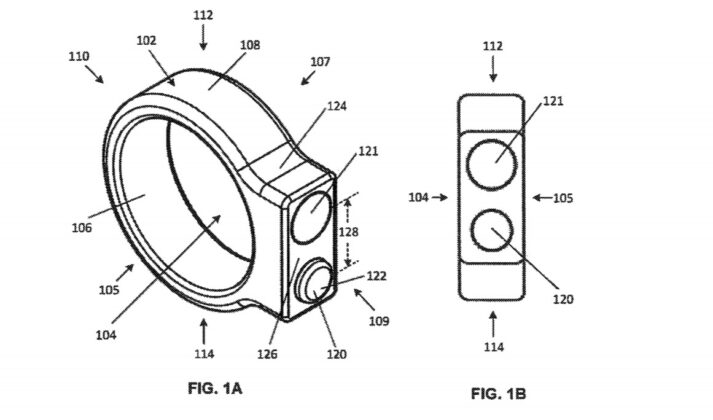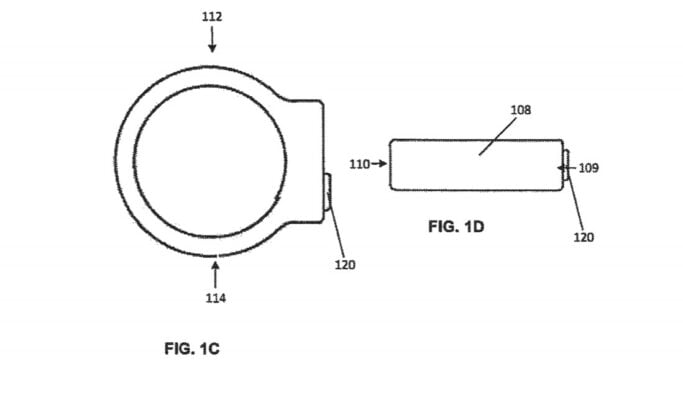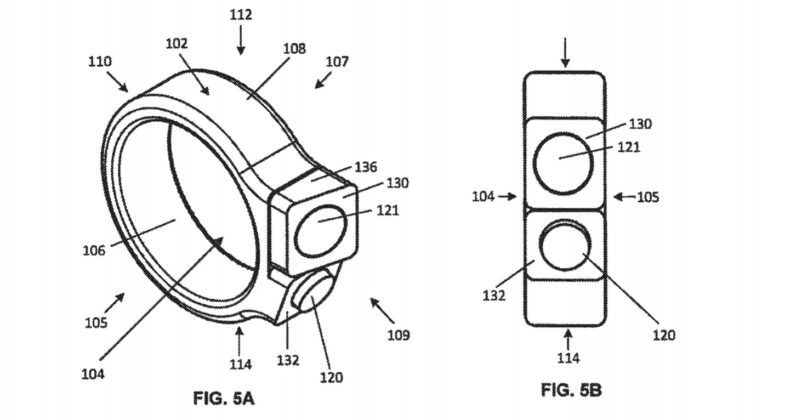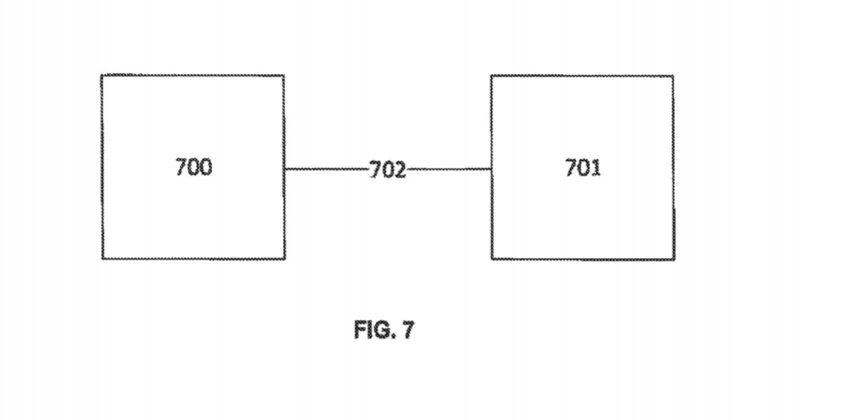Amidst a bucket load of patents by companies, Google’s unique patent shows that users can take capture a picture/selfie without a smartphone. Accordingly, it’s new patent shows a smart ring that can take selfies as you wear it.
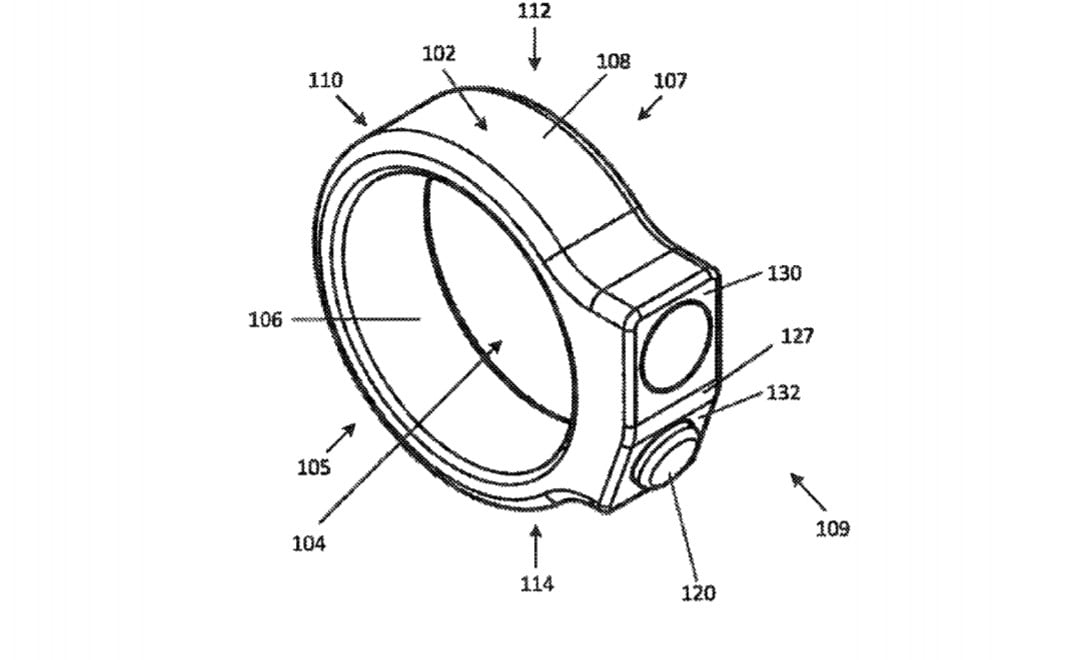
As spotted by Protocol(via Softpedia news), Google has applied for the patent at USPTO way back in May 2019. However, it got published only on November 10, 2020. USPTO is a United States Patent and Trademark Office. First, the abstract of the patent pretty much confirms that it’s a smart wearable device with a selfie camera.
Google Smart Ring- Structure & Functions
As per the patent description, the smart ring houses an aperture(opening) that is enough to fit a finger. Precisely, it says the aperture is shaped to fit the first finger(finger where the ring sits) of the user. Further, the smart ring has the following components housed inside:
- A processor(to process, coordinate, transmit data)
- An input device(button/joystick/touch sensor/lever/dial)
- An optical sensor(Normal/autofocus camera- to capture images)
- Transmitter(Transmit the image to an external device- Wireless)
- Power Source(Optional- battery/fuel cells/ultra-capacitor)- to power processor, transmitter & autofocus camera.
- An indicator(light source/speaker/haptic feedback device)
Additionally, the smart ring also requires a second wearable device typically a HUD(Heads-Up Display) for transmitting, displaying the images. For representation purposes, Google has shown Smart Glass schematics. Basically, the company says it has not included other implementations to avoid obscuring(keeping it secret) the embodiments.
To begin with, Google says that the smart ring comprises two surfaces apart from the ring- One which houses the camera, and the other housing the input device. Additionally, both the surfaces are designed to tilt sideways to comfort the user and his/her finger range. Also, the housing that has a camera is capable of protruding out of the platform and beyond the ring.
This is according to the finger it is worn(eg: left index/ring finger). Typically, the finger may be anyone on either hand. Google even mentions that the circular body may also be a helix/spiral shape with a break. Accordingly, it will expand to tolerate the fingers of different sizes.
EDITOR’S PICK: Apple patents a futuristic VR/AR Headset that sends images directly to users’ pupils
Function
As for the input device, a user can perform different actions with different levels of pressure(if button) to it. However, in the case of a touch sensor, it can detect different tap levels, and the right input finger to avoid accidental presses. Other actuation mechanisms can be can also be from a laptop/mobile, response from a human stimulus, eye-tracking via Smart Glass, and more.
Thus on actuating, the sensor captures the image and sends it to the processor. The camera may be a fixed/autofocus camera. According to the position, Google says the camera projects upwards, tilts sideways to capture the image. Also, the possibility of connecting to a HUD hints that it may also live feed the contents to a screen.
That said the processing unit has a CPU, RF circuitry(RF transceiver/DSP/SIM), I/O, Power. The ring may also include a gyroscope, accelerometers for vibration/shock impact. Additionally, Google also talks about an optional control module. The smart ring may use either wired, Wi-Fi, WiMax, Bluetooth, NFC one-way/bi-directionally to send the data to the second device.
Secondary wearable device(HUD)
Talking about the second wearable device, Google says it could be anything from a smart Glass to a HUD(Heads Up Display). Precisely, it should have a display for viewing contents, processes, and a transmitter to communicate with the smart ring.

Also, other implementations of Google’s secondary wearable device hints at the possibility of a Helmet, Headbands etc. Nevertheless, this looks like an interesting patent from Google and we hope it becomes reality someday.

